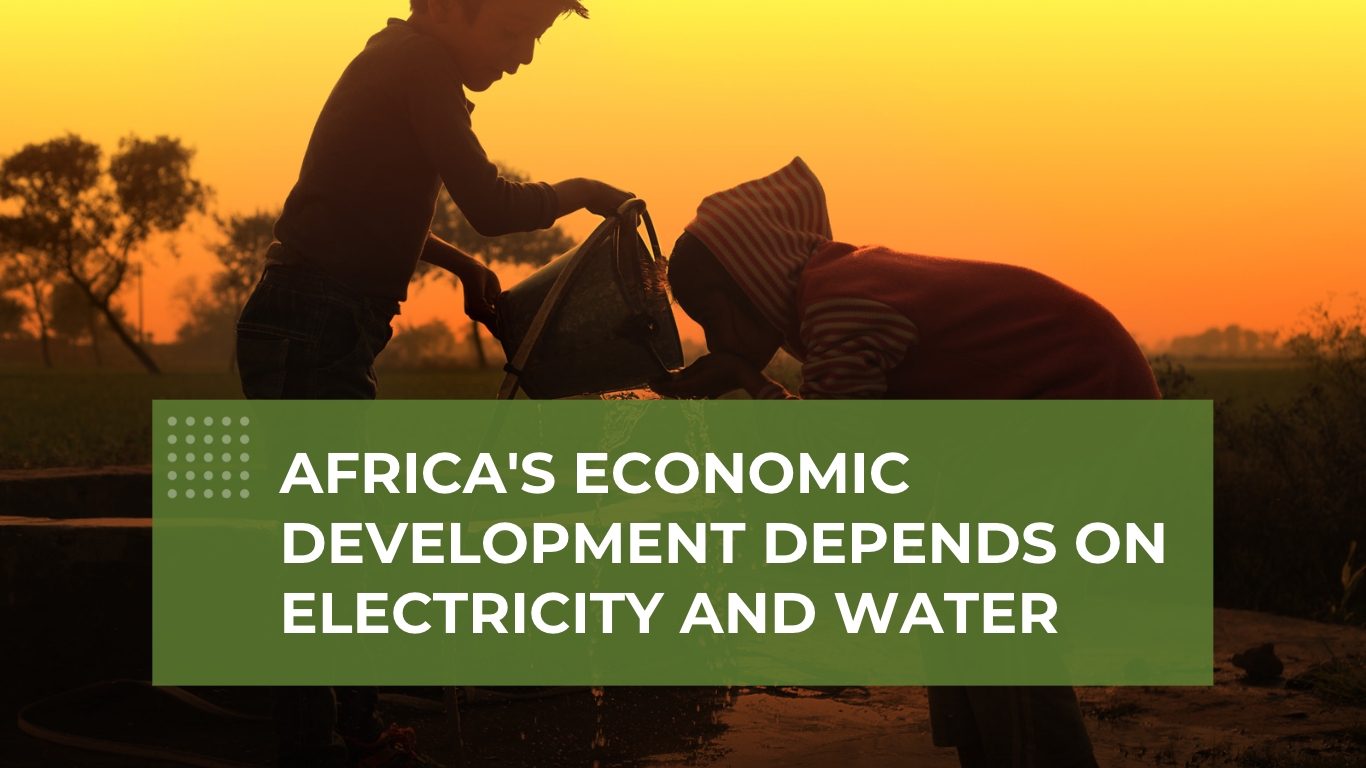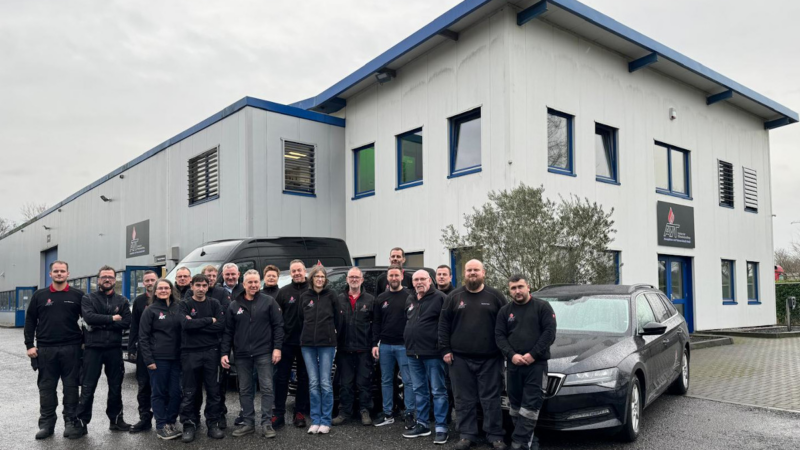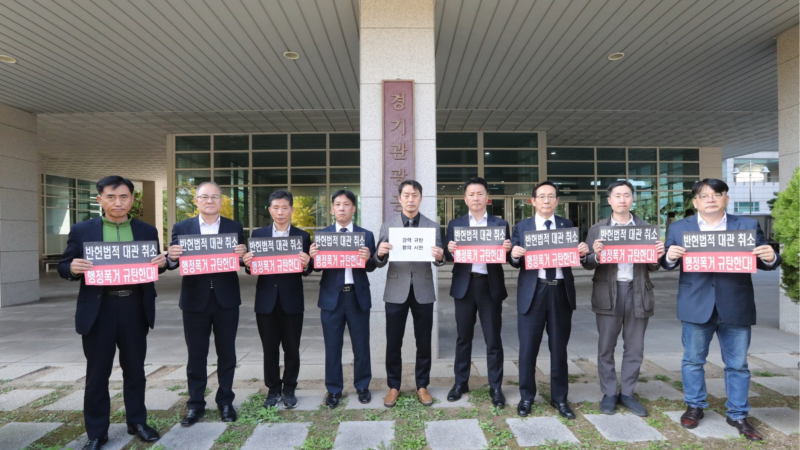Inadequate water and power supplies are holding back development in Africa, by Erik Simon interviewed, managing director of GrowExpress Ltd. farming operation in Nigeria, by Dr. Rainer Schreiber.
Africa development is tumultuous, but marked by challenges. That’s how Erik Simon, managing director of GrowExpress Ltd. in Nigeria, describes one problem: inadequate water and electricity supplies are holding back Africa’s development.
Development is everything; without electricity and water, there is no development
Simon, the managing director of GrowExpress, runs a model agricultural estate in Nigeria/Africa. In the Christian stable part, the farm is constantly expanding. Electricity from photovoltaics and water from the nearby river and deep wells supply the people, livestock and farm produce on the property. According to Thomas Wegener, founder of GrowExpress Ltd, self-sufficiency makes you strong. In many cases, however, Africa suffers from a lack of development or supply security. Even South Africa, the world’s most economically powerful country, shocked the world when its state-owned power utility announced in December 2022/January 2023 that it would cut power for 13 hours a day. There are numerous examples of this kind.
Tanzania, for example, is both beautiful and poor (East Africa)
These types of problems can be found throughout Africa. According to the Tanzanian government, as of July 2022, more than 80 percent of the population in the capital city of Dar es Salaam and regional capitals have access to clean drinking water. The figure is 70 percent in district capitals, 67 percent in so-called national projects and around 72 percent in rural areas. According to the report, the population in urban areas almost doubled between 2002 and 2012 due to very high population growth (about 3.1 percent) and high migration to urban areas. Currently, about 37 percent of the population lives in urban areas. According to World Bank projections, Tanzania’s population will double to 120 million by 2040, half of whom will live in urban areas. If the population grows at nearly the same rate as the number of new households connected to the water network, supply rates will stagnate. Unpredictable extreme weather events associated with climate change, such as droughts, heavy rains or floods, place additional stress on existing resources and systems, the Tanzanian government said.
Tanzania has limited electricity supply. According to the World Bank, 37.6 percent of the population of the East African country currently has access to electricity. While 73.1 percent of the population in urban areas is connected to the power grid, only 24.2 percent of the population in rural areas is. Tanzania reported an electricity generation capacity of 1,605.86 megawatts in 2021. Of this, 48 percent was natural gas, 31 percent was hydropower, 18 percent was liquid fuels, 1 percent was solar, and 1 percent was biomass.
A look at Kenya, Africa’s tourism hotspot
The situation is similar in Kenya, which is best known in the Western world for tourism…. In Kenya, 60 percent of the population has access to clean drinking water, and in urban areas, the figure is as high as 87 percent. Kenya has an abundance of water resources that could be used for drinking water. According to the government, ongoing urbanization, particularly in the greater Nairobi area, is putting a strain on drinking water supplies. Kenya has a population of about 53 million people with an annual population growth rate of 1.9 percent, but that has declined recently. Projections indicate that water supply in Kenya will continue to deteriorate as a result of climate change. At the same time, economic development is expected to increase demand.
More than 75 percent of the population now has access to electricity. Renewable energy accounts for 92 percent of total electricity consumption. Geothermal energy is Kenya’s most important source of electricity, accounting for 44 percent of total generation. In recent years, the food situation of the Kenyan population has deteriorated. The 2020 locust plague, constraints from the Covid 19 pandemic, rising fertilizer and fuel prices, and a high inflation rate have led to yield losses and higher food prices. According to a German government report, the fifth consecutive rainy season has been below average in much of the country, leading to the worst drought in more than 40 years. … According to the report, about 17 million people were affected by the drought, mostly in northwestern, northern and eastern Kenya. Acute food insecurity affected 4.5 million people. According to government statistics, 29 percent of children in rural areas are considered underdeveloped.
Stocktake: Mozambique – north of South Africa – 40 percent of Mozambicans have access to electricity
In 2022, only about 40 percent of Mozambique’s population will have access to demand-responsive electricity, with only 15 percent of that in rural areas. Unfortunately, the gap between supply and demand for electricity is widening here. Mozambique’s government has set itself the goal of achieving universal access to electricity by 2030. The German government believes the causes are the large country’s poor economic performance on the one hand and its high vulnerability to extreme weather events as a result of climate change on the other. Tropical storms would have damaged parts of the electrical infrastructure even in 2022. In terms of nutrition, 43 percent of children under five and 28 percent of children under six months of age are chronically malnourished. Mozambique is a low-income, food-insecure country that is among the poorest in the world, he said. According to the World Bank, 64.2 percent of the estimated 31.3 million people lived in extreme poverty, the government said.
Bottom line: Africa is catching up, and its population is growing
Population trends in Africa continue to be positive. More water and electricity are needed, and food is becoming scarce. Governments, economies and capacities are catching up. Don’t just talk about hunger, act,“ says German founder Thomas Wegener of GrowExpress. There are 675 million food insecure people in Africa, and if current trends continue, the continent will have the largest undernourished population by 2030. (51.5 percent). Countries can only respond with development, not imports. Take Nigeria, for example, which is the world’s largest producer of yams (food and medicinal plant) and cassava, and the fourth largest producer of cocoa. Why not expand the concept? The GrowExpress farm concept in Nigeria aims to respect local structures and not destroy them. This means that the previous small-scale field cultivation based on human labor is preserved. However, the population can receive support and knowledge transfer here, because in most cases it is know-how that is lacking, not hard work. Above all, irrigation, multi-field cultivation, fertilizer and the use of modern seeds have yet to become established in the small-scale farming of individual families. Africa can feed itself, and ideas like GrowExpress Ltd. can help.
V.i.S.d.P
Dr. Rainer Schreiber
Lecturer Adult Education & Human Resources Consultant
About the author:
Personnel consultant and honorary lecturer Dr. Rainer Schreiber with a degree in economics, specializing in financing, controlling, human resources and training. The blog schreiber-bildung.de offers the topics around education, further education and career opportunities. His interests lie in adult vocational education and he publishes on the topics of human resources consulting, demographic change and economic policy. You can reach us at abowi.com.
About Erik Simon:
Banking and economics are the domain of Erik Simon, who has been globally responsible for years. After an apprenticeship as an insurance salesman, independent sales followed with extra-occupational studies in economics at the University of Trier and the University of St. Gallen, among others. DZ Bank Luxembourg and Bear Stearns Companies, Inc. in London significantly promoted his focus on documentary crediting and alternative financing. In today’s world, independent and qualified advice to countries and institutions is becoming increasingly important to achieve short, medium and long term goals and successes that contribute to the improvement of people’s lives and on many levels, Erik Simon CEO (Chief Executive Officer), Managing Director of GrowExpress Ltd. is convinced.
Das GrowExpress Ltd. Büro befindet sich in Nigeria, Cocoa House, Dugbe, 200263 Ibadan, einem der wichtigsten Gewerbegebiete im Bundesstaat Oyo, Nigeria. Das Unternehmen GrowExpress Ltd. bewirtschaftet ein landwirtschaftliches Gut von 800 Hektar ungefähr 200 km nördlich der Millionenstadt Lagos in Nigeria. GrowExpress steht für Nachhaltigkeit. Durch Investitionen in die landwirtschaftliche Zukunft mit innovativen Produktionsverfahren für höchste Effizienz und Ertragssteigerungen. Weitere Informationen unter https://growexpress.org
Contact
GrowExpress Limited
Kingsley Ekwueme
Cocoa House, Dugbe 1
200263 Ibadan
Phone: +234 7031135981
Url: https://growexpress.org
Die Bildrechte liegen bei dem Verfasser der Mitteilung.







